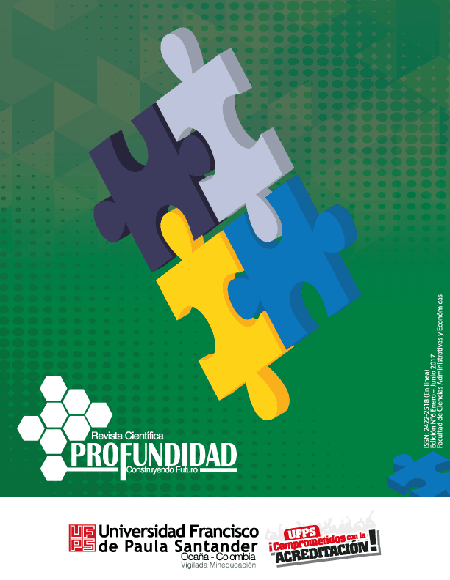Pedagogical practice for the development of creativity and innovation in second grade of primary basic
Práctica pedagógica para el desarrollo de la creatividad y la innovación en segundo grado de básica primaria
Main Article Content
This mixed type investigation enquired the pedagogical practices of teachers for the development ofcreativity and innovation in the second grade of the Municipal School Educational Institution Airport of the city ofCúcuta. For this, he used the Theory of Sociocultural Creativity defined by Dr. De Prado (2011); The methodologicalprocedure that allowed to inquire about these practices was supported by two techniques of getting data such as thequestionnaire and the focus group, this first carried out to the 5 teachers and the focus group to 10 students, two of each second grade course.The study was divided into 4 dimensions: Dimension 1. Educational Environment, Dimension 2, Interaction with thestudent, Dimension 3. Methodology and Dimension 4. Learning, in which you will see weaknesses regarding to the pedagogical practices of teachers and their interest in the development of creativity and innovation in their students.
Downloads
Article Details
Aigneren, M. (2002). La Técnica De Recolección de Información Mediante los Grupos Focales. Obtenido de CEO Centro de Estudios de Opinion Universidad de Antioquia: file:///C:/Users/user/Downloads/1611-5142-1-PB.pdf
Benetti, P. (s,f). Facilitación De La Creatividad y la Innovación. Obtenido de Escuela de Facilitadotes de la Creatividad y la innovación: http://www.crearmundos.net/reflexionados/facilitacion.pdf
De Prado, D. (2011). Teorias de la creatividad en accion. Obtenido de http://www.iacat.com/iacat_areas/areas_documentos/Teorias_de_la_Creatividad_en_Accion._Dr._Prado.pdf
Gallardo Echenique, E. (12 de 6 de 2014). Utilización del programa de análisis cualitativo ATLAS.ti para gestionar y analizar datos. Obtenido de Atlas.ti: https://atlasti.com/2014/06/12/utilizacion-del-programa-de-analisis-cualitativo-atlas-ti-para-gestionar-y-analizar-datos/
Gobernación de Norte de Santander. (28 de 06 de 2016). Proyecto ‘Enjambre’ conformará Redes de Apoyo Departamental para fortalecer áreas del conocimiento. Obtenido de http://www.nortedesantander.gov.co/Noticias-Gobernaci%C3%B3n-Norte-de-Santander/ArticleID/4201/Proyecto-%E2%80%98Enjambre%E2%80%99-conformar%C3%A1-Redes-de-Apoyo-Departamental-para-fortalecer-%C3%A1reas-del-conocimiento
Hernández Sampieri, R., Fernández Collado, C., & Baptista Lucio, M. (2010). Metodología de la investigacíon. México: McGRAW-HILL / INTERAMERICANA EDITORES, S.A. DE C.V.
Martín-Gordillo, M., & Castro-Martínez, E. (2014). Educar para innovar, innovar para educar. Congreso Iberoamericano de Ciencia, Tecnología, Innovación y Educación.
MinEducacion. (10 de 2009). Altablero. Obtenido de Creatividad: corazón y razón de la educación del siglo XXI: https://www.mineducacion.gov.co/1621/article-210021.html
Pereira Pérez, Z. (2011). Los diseños de método mixto en la investigación en educación: Una experiencia concreta. Revista Electrónica Educare, 15 - 29. DOI: https://doi.org/10.15359/ree.15-1.2
Pérez Bertol , P., & Córdoba Iñesta, A. (2015). El aula creativa como propuesta pedagógica. Creatividad y sociedad No. 23.
Ramírez Robledo, L., Arcila, A., Buriticá, L., & Castrillon, J. (2004). Paradigmas y modelos de investigación Guía didáctica y módulo. FUNDACIÓN UNIVERSITARIA LUIS AMIGÓ.
Revista digital para profesionales de la enseñanza. (03 de 2016). Temas para la educación. Obtenido de Revista digital para profesionales de la enseñanza: https://www.feandalucia.ccoo.es/docu/p5sd13433.pdf
Sampieri Hernández, R., Collado Fernández, C., & Lucio Baptista, P. (2003). Metodología de la investigación. México: McGraw - Hill Interamericanal.










